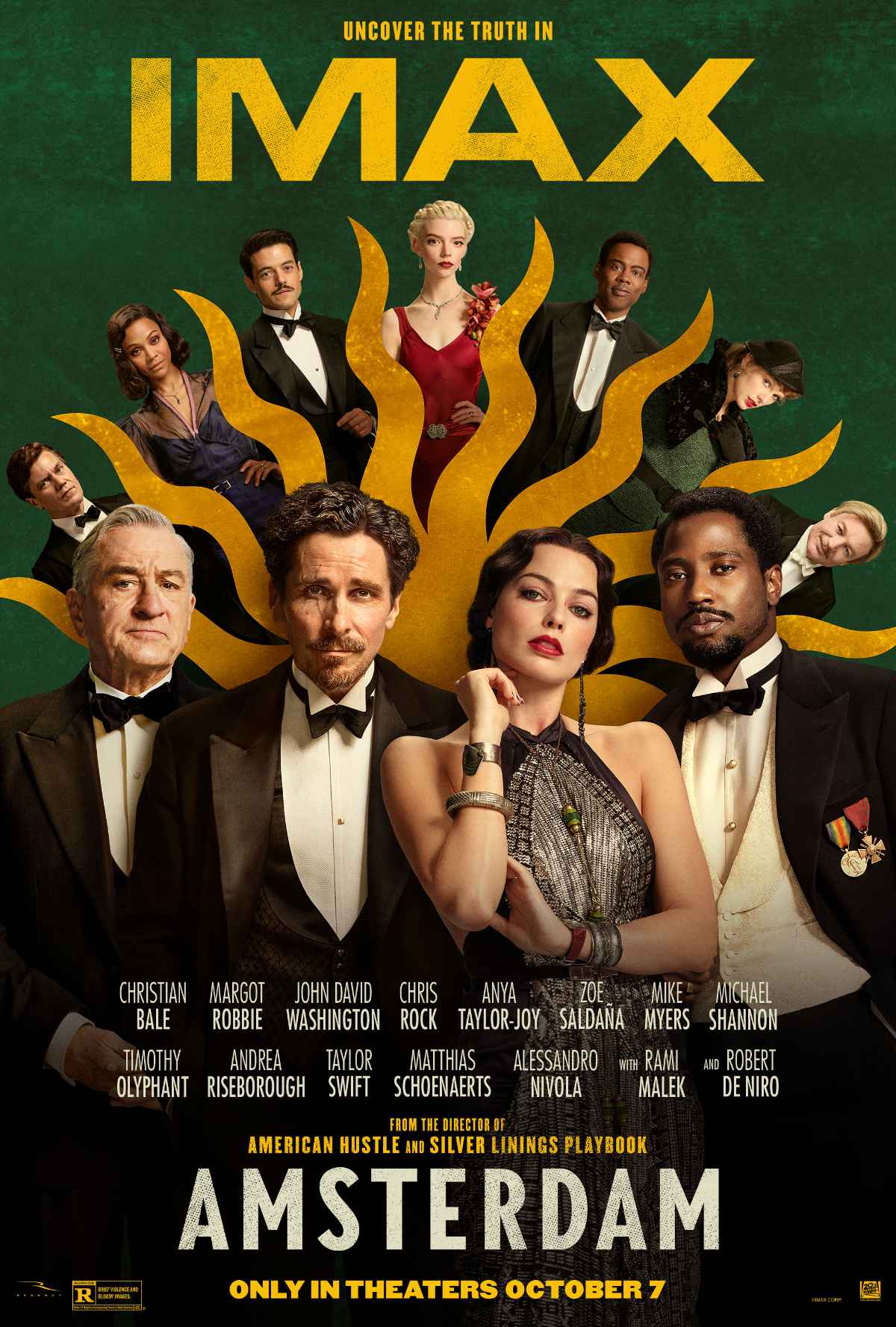Amsterdam Review: The New David O. Russell Film
Like most period films, David O. Russell’s Amsterdam tries to both look forward to the future and reveal something about the past. It is less about ‘yesterday’ than ‘today’ but unsure which part of ‘today’ it’s aiming at. It wants to remind us of moments in the past to keep us from Santayana-like repetition, but it also wants to wreathe the past in a permanent rose tint and invite us to remember it as an aspiration rather than a warning.
The Amsterdam of Russell’s film is a literal place, a retreat away from the front lines of World War I for Burt Berendsen (Christian Bale) and Harold Woodsman (John David Washington) after receiving grievous wounds in battle. It’s also an ideal of freedom in the sense of lack of responsibility or care, which they not only strive to return to but constantly reference as the state of grace we deserve. An Eden before knowledge of good and evil was discovered, ‘back then’ when things were simpler.
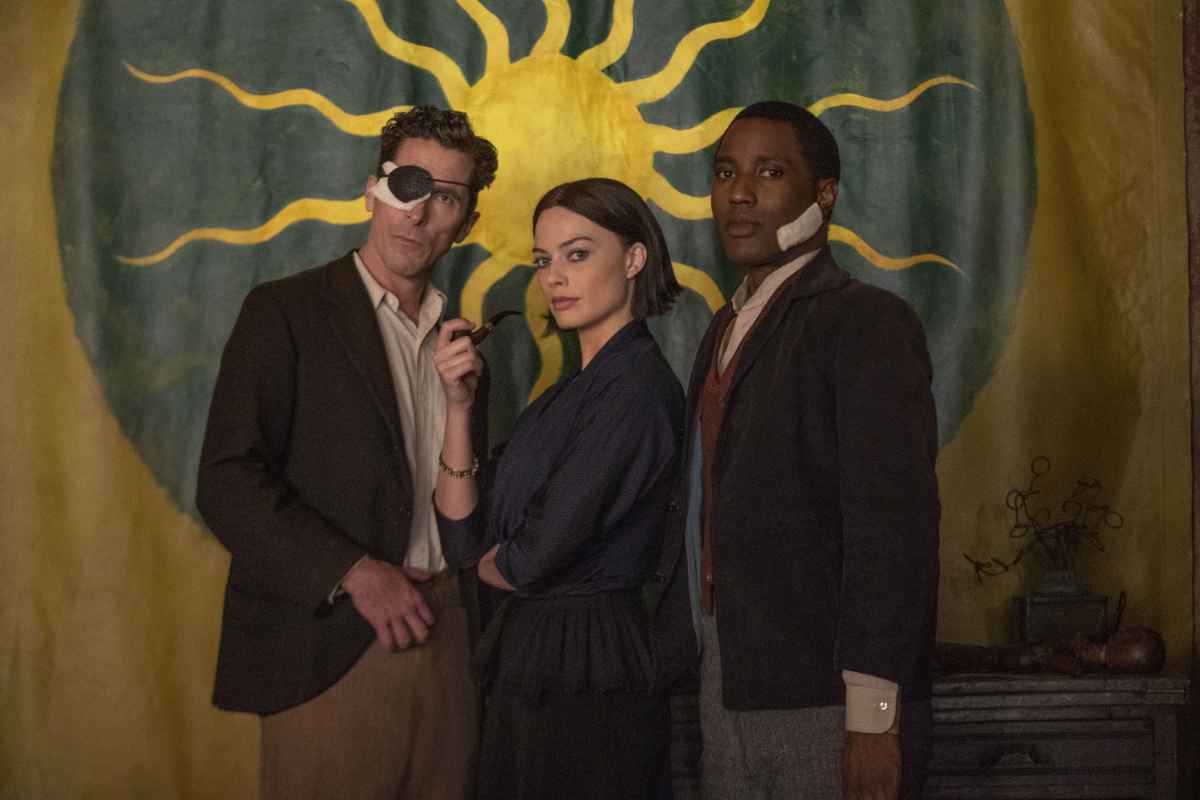
It’s a push and pull Amsterdam openly acknowledges, hanging a lampshade on its own conceits in order to hide them. “These are the good times, but they will be followed by the bad times,” Valerie Voz (Margot Robbie) explains to Burt and Harold before abandoning them to Amsterdam‘s graces as she fights her own secretive and endemic internal battles in between making art out of shrapnel and befriending Allied military intelligence officers.
She is right in that the bad times do come again in the Great Depression-riddled 1930s when Burt and Harold — now a skid-row doctor cast out of his Park Avenue life by classicism and a Harlem lawyer fighting systemic racism — are recruited to investigate the untimely death of their former commanding officer (Ed Begley Jr.).
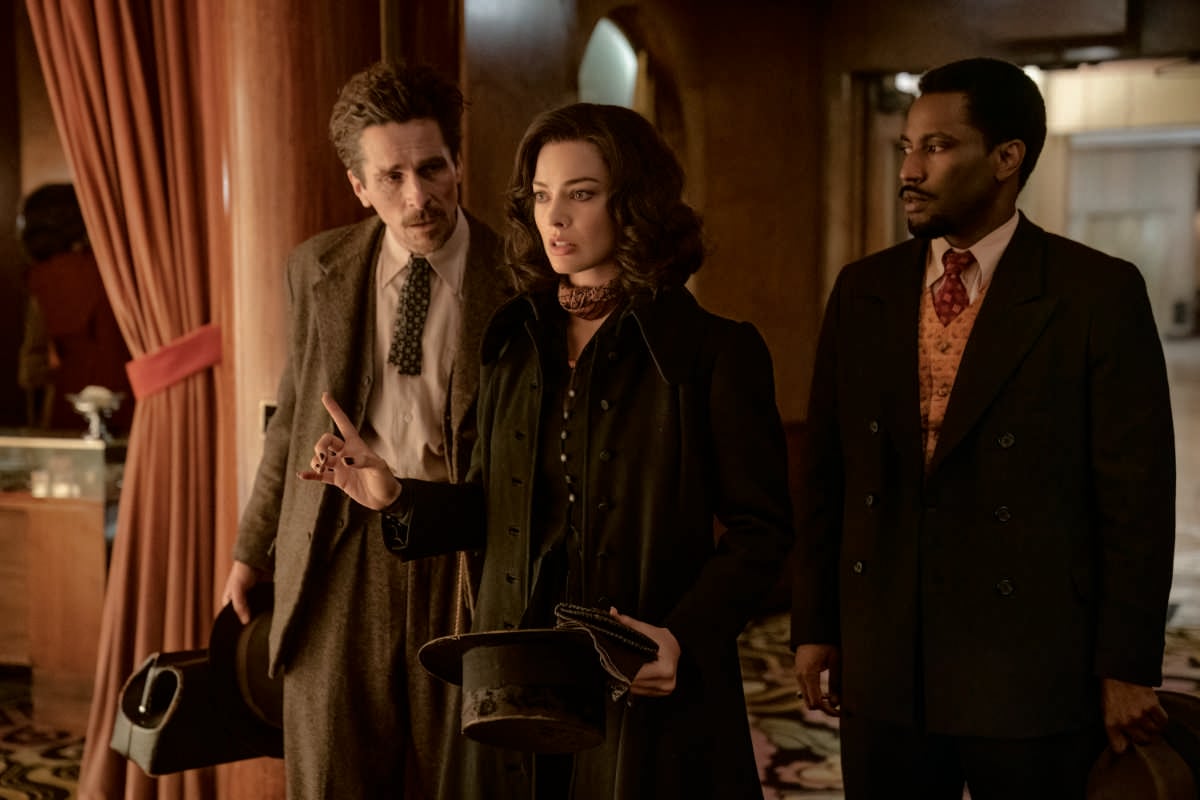
The attention of a red-faced assassin (Timothy Olyphant) not only warns the pair that they are inveigled in something sinister but also puts them in the crosshairs of the police, looking for someone to take responsibility for the deaths going on around them. Only Burt’s work with Veterans and the fact that he is the narcotics dealer for the homicide detective chasing after them keeps them free long enough to find whoever is behind the plot and bring them to justice.
Russell’s instincts towards eccentric comedy are clear in each twist and turn of the plot, reducing the elements of risk and danger to brief setups for not particularly funny punch lines that keep tension at bay like a guardian watchdog. What sounds on paper like a potentially engaging thriller becomes a screen Odyssean travelogue through time, space, and the various boroughs of New York.
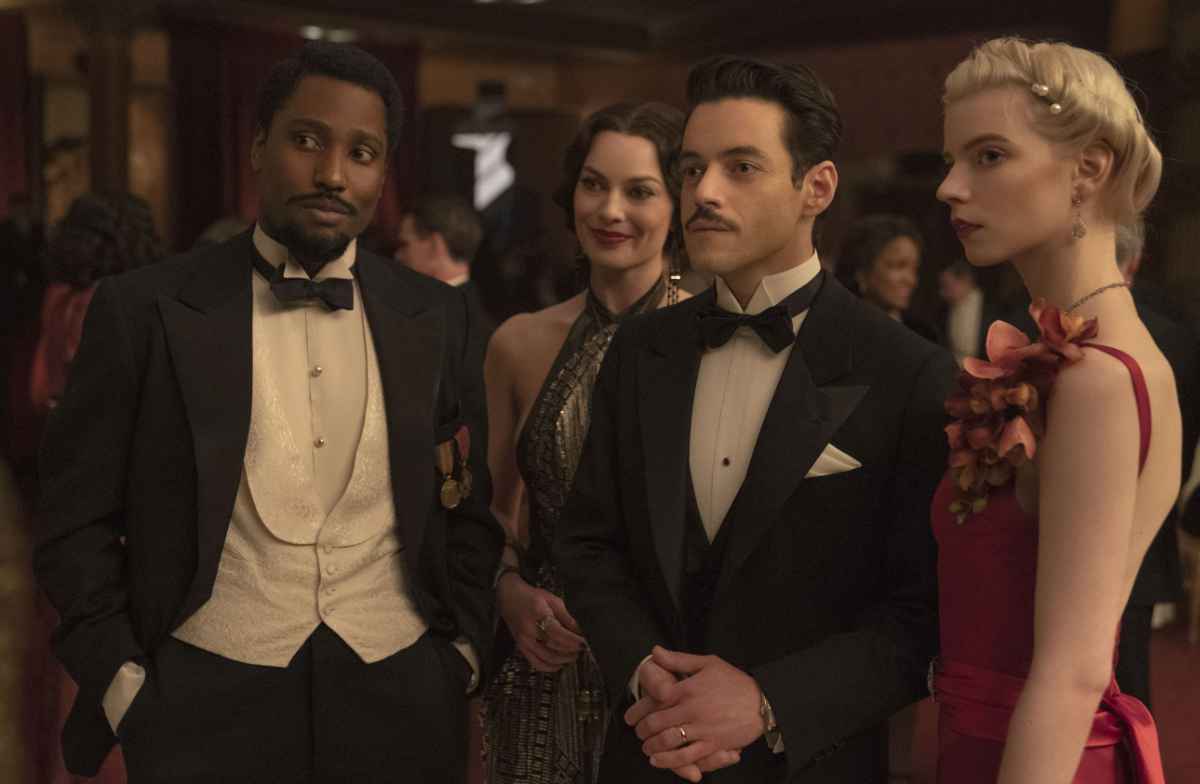
Burt and Harold bound through the lives of various peculiarities — from Valerie’s gloriously smarmy brother (Rami Malik) and sister-in-law (Anya Taylor-Joy) to Mike Myers‘ bird-watching obsessed MI-6 agent and Burt’s own class-conscious wife (Andrea Riseborough) he is now allowed to visit — in a quest for illumination but mostly find only confusion.
Some of that can be laid at the feet of Russell, who interrupts his own startling opening to go an extended flashback of the introduction of Amsterdam as a center of longing for us and Burt.
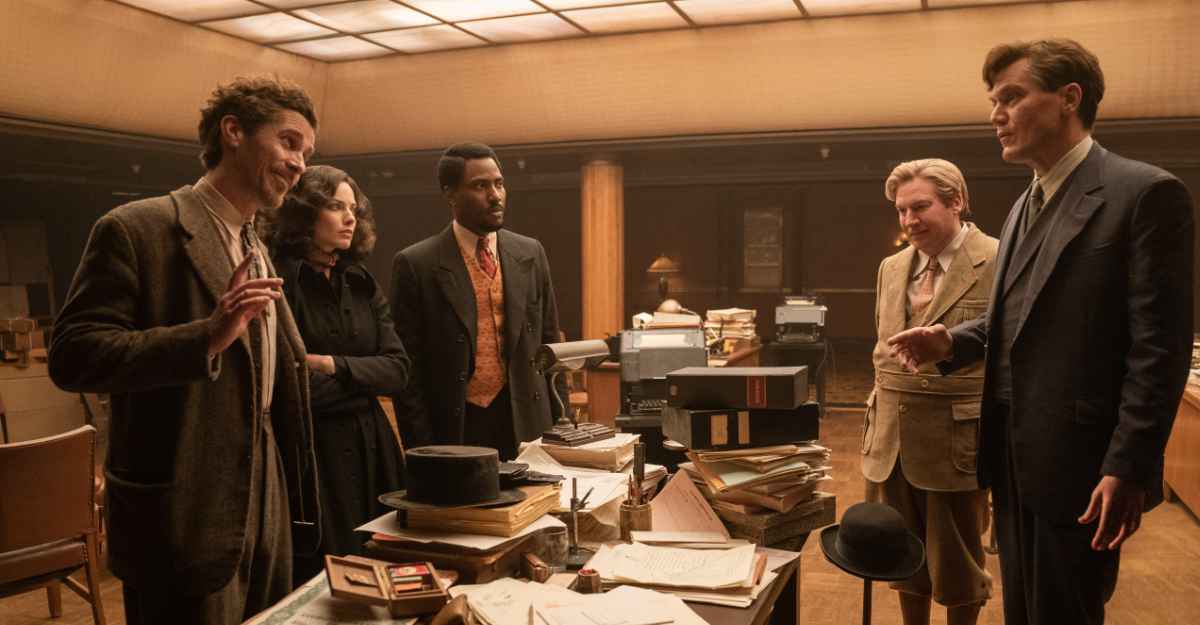
The separation between past and present becomes quickly flattened, not just in metaphor but in execution. Cinematographer Emmanuel Lubezki bathes Skid Row in the same golden idyll as the bohemian paradise of Amsterdam.
Time and place merge into one never-ending segment of dusk colors, even as Lubezki’s exquisite lighting collides with decisions to keep much of the camerawork handheld in an attempt to make the period work more alive and of the moment.
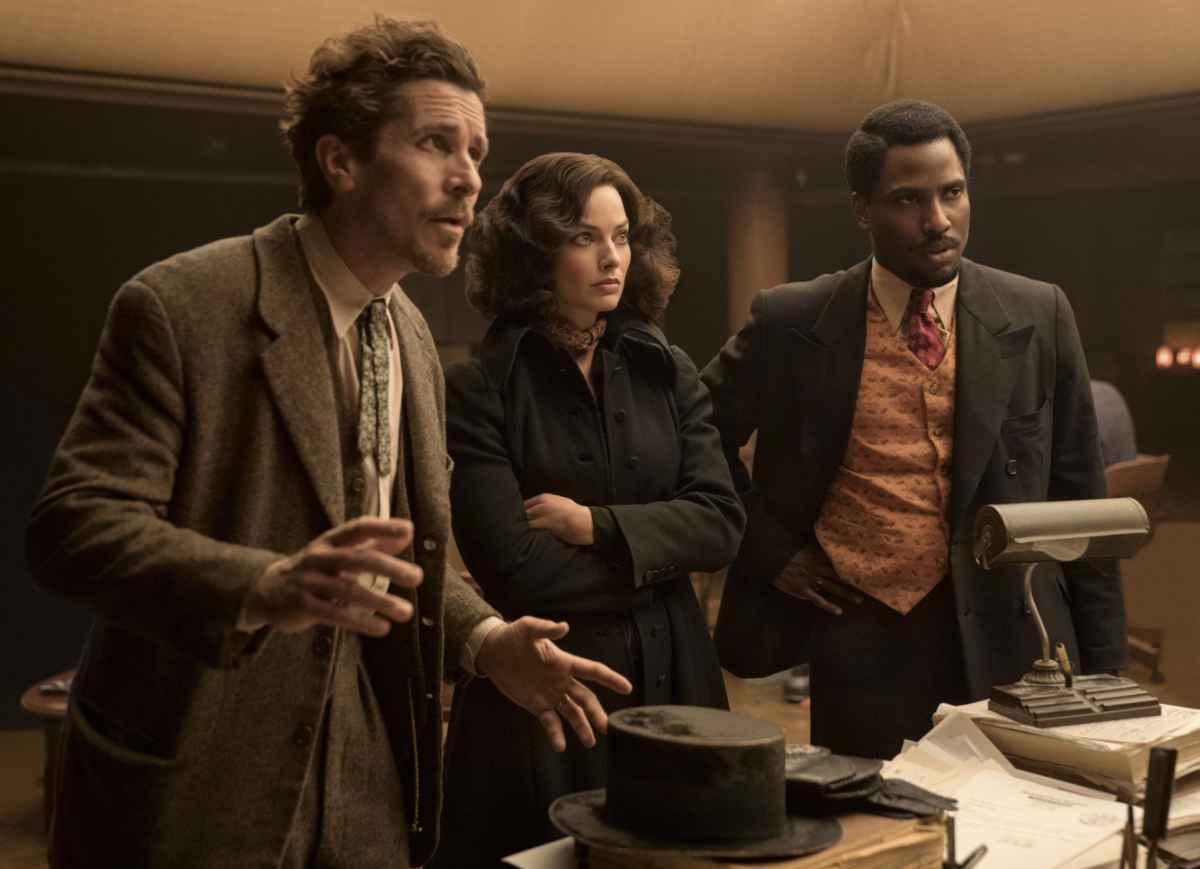
Only when Burt and Harold leave the confines of the ground and ascend to the loftier elements of rich and powerful does the camera settle down to floating movements and static compositions (not to mention some of the most beautiful art Deco design elements).
It’s an attempt to visually separate the real and the unreal of the people and the elites, but it makes that world of wealth and privilege more inviting than the imagined paradise of Amsterdam.
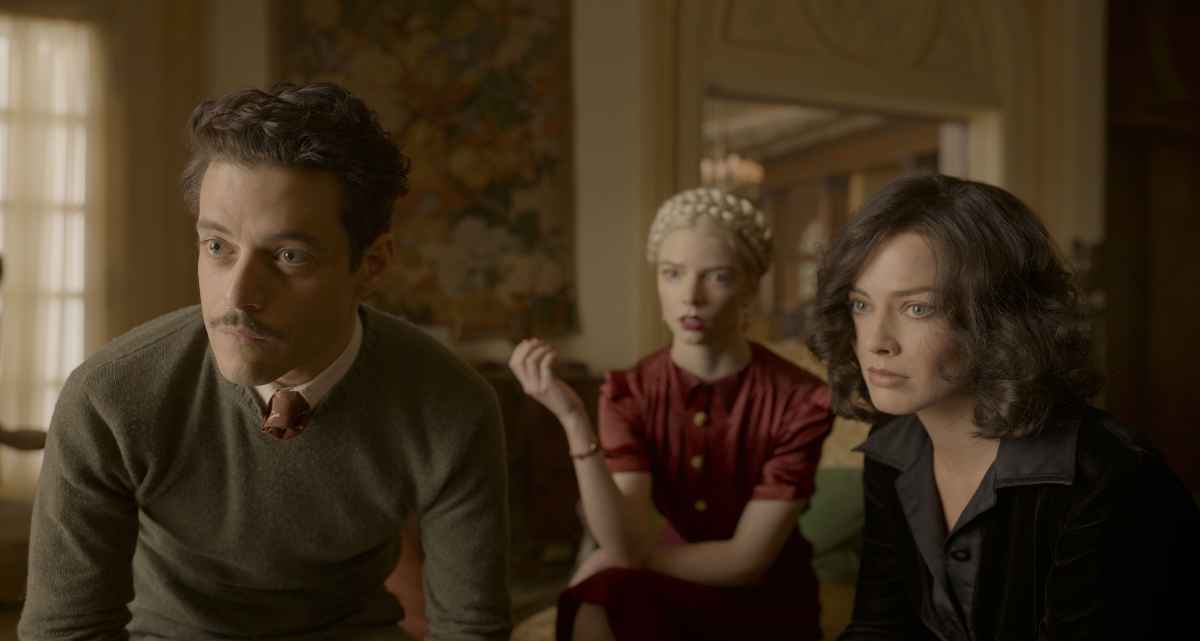
It also makes clear how much thought is going on behind the scenes, a realization that doubly damns how off-target and all-over-the-place Amsterdam frequently becomes.
Burt and Harold’s investigation quickly subsumes them in a plot by business leaders to incite a fascist takeover of the American government by a beloved war hero (Robert De Niro), mirroring the infamous ‘Business Plot’ of 1933 and clearly casting condemnation and warning on the actions of today.
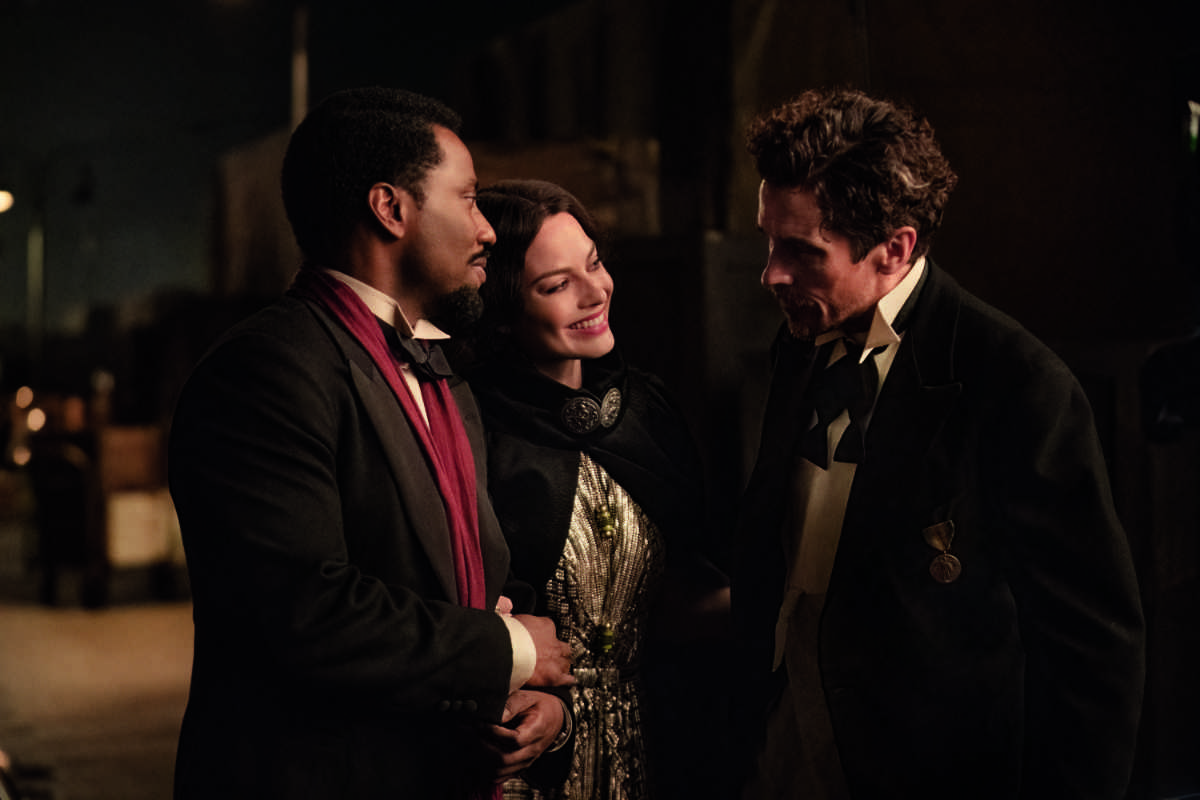
It’s a seriousness belied by the film’s commitment to eccentricity and the well-timed dénouement of a comedy. “These are the good times, but they will be followed by the bad times,” Valerie said earlier before concluding, “before the good times come again.”
It’s a charming sentiment but not one that naturally attaches itself to either the period Amsterdam depicts, or the bad times it wants to warn of. Maybe it makes sense to someone who dreams of aimless Netherland life or art and dancing as the epitome of existence, but for anyone else, it’s as clear as mud.
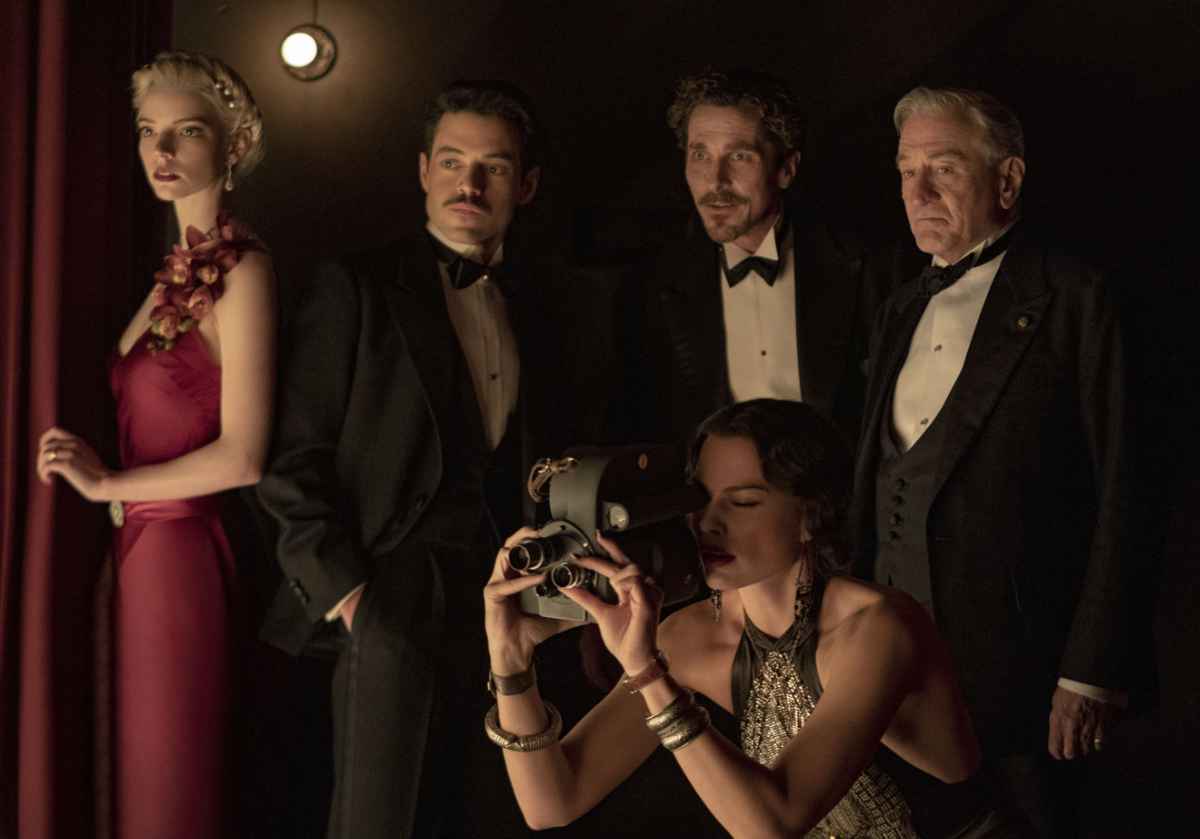
AMSTERDAM REVIEW SCORE: 6.5 OUT OF 10
20th Century Studios‘ Amsterdam is now playing in theaters. The film is rated R for brief violence and bloody images.
